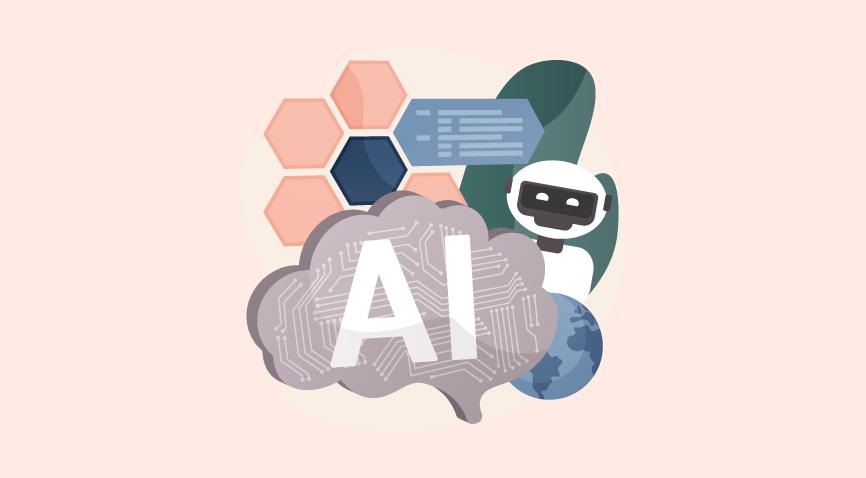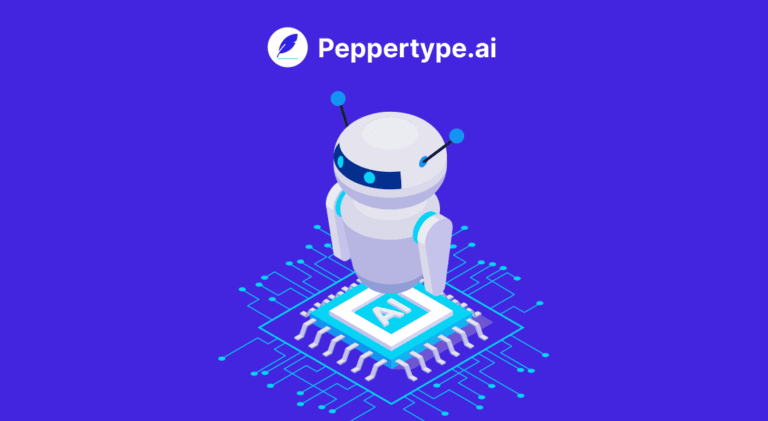
Table of Contents
- Defining an AI Writer
- Understanding GPT-3
- Why Use GPT-3l
- The Future of GPT-3 as the Best AI Writer
- Key Takeaways
- Conclusion
- FAQs
Deep learning and natural language processing are the two key features of artificial intelligence (AI) technologies that help AI tools in using prevailing information about any subject from the database and processing it accordingly.
AI writers are one of the innovative technologies that are developed as an extension of AI technologies. They are used for imitating the working patterns of data processing. AI writers use AI programs to develop grammatically correct and relevant content with the given keywords on the basis of information present in the AI database. AI writers have the ability to create content in the tone and format that human content writers typically use on the basis of information already existing in its database or fed by the users.

Defining an AI Writer
An AI writer can be defined as an online application designed for the creation of quality articles with keywords using AI technologies and tools. An AI writer teaches itself everything about any given topic and develops qualitative content on the basis of gained knowledge. AI writing tools can produce structured sentences the same way human content writers do by evaluating the provided templates and vocabulary that they are programmed to learn. They also produce content on the basis of developed understanding.
Understanding GPT-3
The GPT-3 model is one of the top AI content writing tools today. GPT-3 was created by OpenAi, which is a research organization co-founded by Elon Musk. It has been described as one of the most useful innovations and advancements in the AI sector in recent years. However, many organizations are thoroughly confused about how this tool works and do not understand its benefits and limitations well enough to create qualitative marketing content.
GPT is the acronym for Generative Pre-Trained Transformer and the numeric 3 represents its generation. GPT-3 is one of the top AI writing tools, which was released in May 2020. This model comprises 175 billion parameters to construct written data. The ability of GPT-3 to produce language is highly marketed as the best innovation among the technologies related to AI, and this technology has proved it is worth the hype created for the same.
GPT-3 can generate text using algorithms that are pre-trained, which means ample data has already been fed to this tool helping it carry out the task of developing quality content. Like OpenAI, this tool has been fed around 570 gigabytes of textual information, which was gathered from Wikipedia, CommonCrawl dataset and other data selected by the organization itself. Thus, this tool has the ability to provide its users with the most useful responses to the questions asked. In technical terms, the GPT-3 model is one of the largest artificial neural networks ever created with reference to AI’s learning. GPT-3 can create content with efficient language structure in the form of answers, essays, a summary of long text, language translation, memos and computer code.

Why Use GPT-3
GPT-3 is considered one of the greatest innovations among AI technologies due to its efficiency as a language prediction tool that can generate any sort of written content with its pre-trained linguistic algorithm. The key features of GPT-3 are that it can write articles, summarize long texts, create blog content and translate languages. Additionally, users can also develop a functional code using English input with this tool.
One of the best features of the GPT-3 model is that it is developed for focusing on the context and meaning of the entire text, rather than being concerned with the meaning of specific words. It has been speculated that the machine learning model has the potential of outperforming human beings concerning the context of developing meaningful content with optimum quality.
GPT-3 model makes use of its algorithmic structure for transforming the provided input into the most useful content pieces as per its prediction with the information present in its system. It is to be noted that GPT-3 is not like other algorithmic AI writers that can process raw information without training. This is because OpenAI has already expended ample knowledge and informative resources in the GPT-3 system, due to which it has an understanding of multiple language and textual structures.
GPT and content marketing
GPT-3 model is mostly used in the content marketing sector due to its unique ability to produce written material with its pre-trained linguistic algorithm and language prediction tool. It can use market analysis data and develop quality content on the basis of the same.
It is a well-programmed AI tool that has the capability of producing accurate data at a rapid pace. However, the developed content needs editing by a human before it can be published. In this regard, many people worry that tools like GPT-3 and their future upgrades may replace humans in the content marketing sector in near future. Therefore, it is essential to evaluate the strengths and weaknesses of the GPT-3 model for understanding alterations the content marketing industry might encounter in the future.
Strengths of the GPT-3 model
- One of the key strengths of the GPT-3 model is that it is an excellent tool for the production of short contexts such as social media posts, article headlines, product’s descriptions and captions.
It offers higher quality low-value content, which allows organizations to save time, efforts and resources invested in the development of short content with the utilization of automated content creation and artificial intelligence.
- The GPT-3 model can also be used for the production of long-form content despite not being developed for the same as short content creation. This model makes use of its language prediction algorithm for the purpose of identifying the best possible sense for developing content on the basis of contents developed priorly with a similar theme, meaning and context. Despite all its limitations, GPT-3 is highly impressive and efficient in long content creation due to its semantic analysis feature.
- The GPT-3 model is highly trustable with regard to creating the first draft of any content and handing it to proofreaders. Thus, using this tool, content creation processes can be made faster and content writers can have more time to work on other projects along with improving the quality of automated content. Organizations requiring quality content for the purpose of fulfilling their marketing needs can use the GPT-3 model for developing necessary content in a cost-efficient and time-saving manner.
Weaknesses of the GPT-3 model
- Automated features of the GPT-3 model are not as creative as human content writers; thus, they may not create emotionally attractive and inducing content. Therefore, all the content developed with the help of this tool requires human proofreading before publishing with the aim of adding emotional appeal for inducing and attracting the targeted audience towards marketing initiatives and efforts.
- The GPT-3 model has limited capacity and minimal variety when it comes to developing formulaic content. Formulaic content requires a comprehensive approach for attracting the attention of the target audience and convincing them to develop emotional familiarity with the content. This is difficult to achieve using the GPT-3 model.
- The GPT-3 model has a limited ability to understand and process complex data, due to which it can create errors in aspects of business analytics and human reasoning. In this context, human involvement is essential in the evaluation and development of financial data.
- Overall, it can be stated that the GPT-3 model does not have the necessary capabilities to replace human content writers currently. It may hold higher excellence in developing short content; however, it is highly limited with regard to the generation of longer-form content and narrative threads. Additionally, there is ample scope of improvement in the GPT-3 model with regard to comprehension, evaluation and narration of complex data content.

The Future of GPT-3 as the Best AI Writer
As per many expert predictions, machine learning algorithms and AI technologies are improving significantly and consistently with ongoing updates and research. Concerning the GPT-3 model, with the latest releases by OpenAI, this model has gained multiple features and abilities of better language prediction and improved content creation.
Not many content development companies have adopted this innovative tool for developing marketing content; however, with continuous updates and upgrades, this tool would be most likely used by organizations all around the world for automated content creation in the near future. Along with its current limitations, its consistently growing abilities should be considered by the organizations as a powerful tool that can make content development easier and faster. Additionally, GPT-3 saves time and cost of developing foundational content which can be improved by human content writers; thus, organizations should use it as a support system in the present era.
Key Takeaways
- Deep learning and natural language processing are the two key features of artificial intelligence (AI) technologies.
- AI writers use AI programs to develop grammatically correct and relevant content with the given keywords on the basis of information present in the AI database.
- The GPT-3 model is one of the top AI writing tools today. It was created by OpenAi and has been described as one of the most useful innovations and advancements in the AI sector in recent years.
- One of the best features of the GPT-3 model is that it is developed for focusing on the context and meaning of the entire text, rather than being concerned with the meaning of specific words.
- Despite its many advantages, there is ample scope of improvement in the GPT-3 model with regard to comprehension, evaluation and narration of complex data content.

Conclusion
While AI writers and similar tools are looked upon with immense suspicion, there is no denying the continuous demand for content – sometimes beyond the capacity of human writers. This is where AI tools like the GPT-3 model come in. Given their current benefits and disadvantages, they can certainly be used as an initial tool in the content writing process.
FAQs
AI writing tools allow users to create content without having to actually type. These tools use natural language processing and complex algorithms to understand what the user intends.
AI works on machine-learning algorithms that absorb billions of data points from the Internet. These data points like story structure, logic, and story writing are helpful in writing stories using AI.
This is not likely to happen. In fact, AI is more of a versatile resource to help writers in their writing process and speed things up.
GPT-3 stands for Generative Pre-trained Transformer 3rd edition, and it uses deep learning to produce human-like text created by OpenAI, a San Francisco-based artificial intelligence research laboratory.
GPT-3 is one of the most powerful and advanced machine-based tools for writing in English. GPT-3 produces text based on its access to massive amounts of computing data.
Latest Blogs
Explore how Google’s 2025 AI search updates triggered ranking chaos. Learn actionable strategies to adapt your SEO for AI Overviews, zero-click searches, and SERP volatility. Stay ahead now.
Learn how to rank on AI search engines like ChatGPT, Perplexity, and Gemini by optimizing your content for authority, structure, and relevance. Stay ahead in AI-driven search with this strategic guide.
Explore the best healthcare SEO services for your medical practice. Improve online visibility and effectively reach more patients in need of your services.
Get your hands on the latest news!
Similar Posts

Peppertype.ai
4 mins read
Taking Writing to the Next Level with Peppertype.ai and GPT-3’s Text-Davinci-003

Peppertype.ai
7 mins read
How Content Generators Work And How To Use Them Effectively

Peppertype.ai
6 mins read